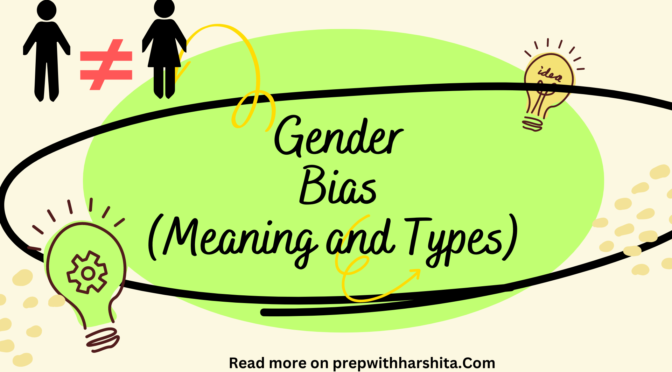Gender bias refers to the systematic and unfair treatment, attitudes, or expectations based on an individual’s gender, which can disadvantage or marginalize individuals based on their gender identity.
It manifests in various forms and can occur at the individual, societal, and institutional levels. Here are some key aspects of gender bias in detail:
- Stereotyping: It often involves the use of stereotypes, which are generalized and oversimplified beliefs or expectations about individuals based on their gender. Stereotypes can perpetuate harmful assumptions about the abilities, roles, and behaviors of men and women, reinforcing gender norms and limiting opportunities for individuals to express their full range of abilities and interests.
- Occupational Segregation: It can lead to occupational segregation, where certain industries or professions are predominantly associated with one gender. This can result in limited access to career opportunities for individuals based on their gender, leading to gender-based wage gaps and disparities in representation in higher-level positions.
- Double Standards: It can involve double standards, where different expectations or standards are applied to individuals based on their gender. For example, women may face greater scrutiny and criticism for displaying assertiveness or ambition, while men may face backlash or stigmatization for displaying emotions or pursuing traditionally feminine roles.
- Unequal Treatment: Gender bias can result in unequal treatment and opportunities in various aspects of life, including education, employment, healthcare, and social interactions. This can lead to systemic disadvantages and inequalities for individuals based on their gender.
- Gender-Based Violence: It contributes to the perpetuation of gender-based violence, including domestic violence, sexual harassment, assault, and discrimination. These forms of violence disproportionately affect women and gender non-conforming individuals and are rooted in power imbalances and societal beliefs about gender roles and entitlement.
- Intersectionality: It intersects with other forms of discrimination and oppression, such as racism, ableism, classism, and homophobia. Individuals who experience multiple forms of marginalization based on their gender and other aspects of their identity face compounded disadvantages and barriers.
- Institutional Bias: It can be reinforced through institutional structures, policies, and practices that perpetuate gender inequalities. For example, discriminatory hiring practices, limited parental leave policies, or lack of representation in decision-making positions can contribute to gender bias within organizations and institutions.
- Conscious and Unconscious Bias: It can be both conscious and unconscious. Conscious bias refers to deliberate acts of discrimination or prejudice based on gender. Unconscious bias, on the other hand, refers to implicit or automatic associations and assumptions about gender that individuals may hold without being aware of them. Unconscious bias can influence decision-making processes and perpetuate gender disparities.
Addressing gender bias requires collective efforts at individual, societal, and institutional levels. It involves promoting awareness, challenging stereotypes, advocating for equal opportunities, implementing inclusive policies, and fostering a culture of respect and equality. By recognizing and addressing it, we can strive towards creating a more inclusive and equitable society for all individuals, regardless of their gender.
Also Read : Difference between Gender and Sex

Also Visit : Prep with Harshita


11 thoughts on “Gender Bias”